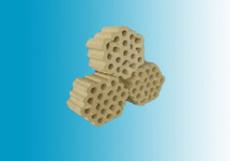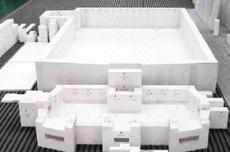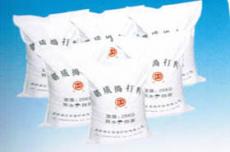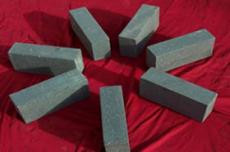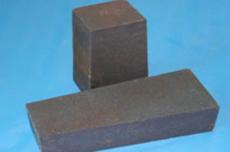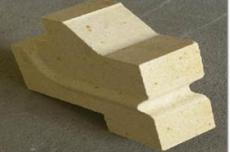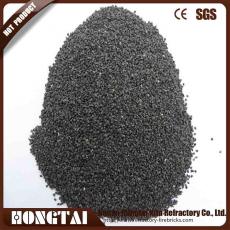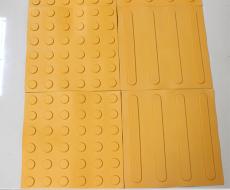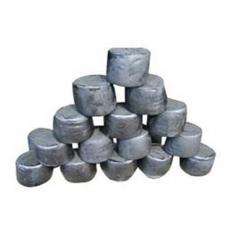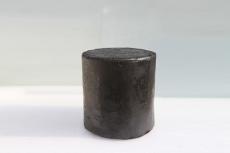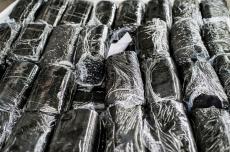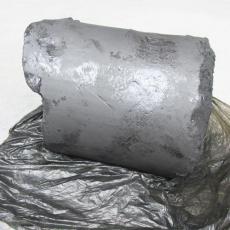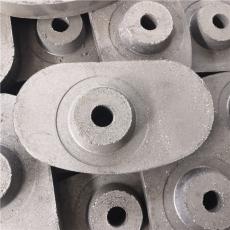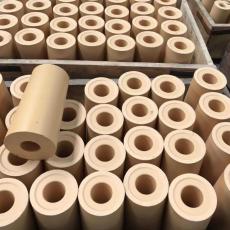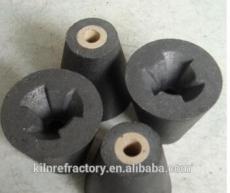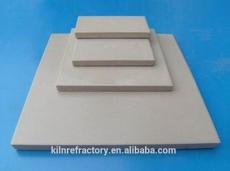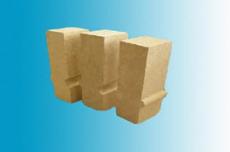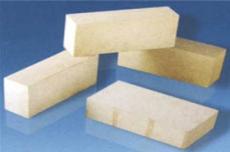
The blast furnace tapping procedure is: the molten iron and slag generated in the blast furnace are first collected and stored in the hearth. When the molten iron and slag stored in the hearth reach a certain depth, the tap hole needs to be drilled to release the molten iron and slag. After the molten iron is cleaned out, the tap hole needs to be blocked with taphole clay. The operation of "opening the tapping hole → tapping the tapping hole and blocking the tapping hole" is repeated to make the blast furnace operation proceed smoothly. The blast furnace tap hole is actually a tap channel constructed by taphole clay.
When tapping, the inner wall of the taphole channel has to withstand the mechanical abrasion and chemical erosion of high-temperature molten iron and molten slag, and the hole diameter will gradually expand. If the taphole clay forming the inner wall of the taphole has better abrasion resistance, the hole diameter of the taphole expansion speed will be lower,and the tapping time will be longer after each opening. The longer the tapping time is, the fewer the tapping holes will be opened and blocked. This will not only reduce the fluctuation of the blast furnace conditions, be conducive to the stability of the blast furnace, but also reduce the consumption of gun mud. , Reduce the labor intensity of the workers in front of the furnace, reduce the pollution of the volatiles of the gun mud to the environment. Therefore, it is very important to extend each tapping time for blast furnace operations.
With the rapid development of our iron and steel industry, blast furnaces are gradually becoming larger, the blast furnace operation technology has also made great progress, such as high smelting intensity, high pressure, high air temperature and oxygen enrichment operation, etc.; at the same time, the number of slagging irons in the blast furnace is gradually decreasing, but the amount of slag and iron each time Increased, the scouring of the slag iron on the taphole clay is enhanced.
Therefore, the normal production of extra-large blast furnaces puts forward higher requirements on the performance of taphole clay. Due to the poor resistance to slag and iron corrosion of taphole clay with warter, low volume density and slow heating speed, the blasting mud unsintered iron mouth redness has been unable to meet the requirements of large blast furnaces for the performance of blasting mud. Anhydrous taphole clay.
Blast furnace anterograde and iron hole maintenance are closely related to the performance of gun clay. The properties of gun mud mainly include compressive strength, flexural strength, slag and molten iron erosion resistance, refractoriness and volume stability.
The slag and iron corrosion resistance of the taphole clay is better. The taphole clay is crushed by blast furnace slag and molten iron during the tapping process. The taphole clay with poor slag and iron corrosion resistance will cause the tap hole to expand, which may cause the tapping process to get out of control. Endanger the safety in front of the furnace; the taphole clay must have good workability, and it is helpful for workers to squeeze the taphole clay into the tap hole in front of the furnace;
The volume of the taphole clay should be small at different temperatures, that is, to ensure that the taphole clay enters the tap hole and the gap at high temperatures is small to prevent the slag iron from seeping out;
The refractoriness of the taphole clay should be high, to insurance the taphole clay will not melt under high temperature conditions; the plasticity of the taphole clay should be better at room temperature, and the good plasticity is conducive to the filling of the taphole clay to the tap hole, and it is beneficial to the old and new taphole clay in the hole to touching each other and bonding together;
The opening performance of the taphole clay is better, which is beneficial to the drilling of the opening machine when tapping.
Anhydrous taphole clay is mainly composed of three parts, namely refractory aggregate and micropowder, additives and binders. At present, the main added raw materials include silicon carbide, silicon nitride, etc., refractory aggregates are mainly corundum, bauxite and high-aluminum fly ash, etc., and traditional cement binders are mainly tar and asphalt. With the improvement of environmental protection awareness, considering the current situation of smoke pollution and harmful to human body caused by the decomposition of tar at high temperature, many manufacturers have adopted environmentally friendly binders.
The main factor that determines the performance of anhydrous taphole clay is the composition of the taphole clay. The composition of the material determines its microstructure, which can change the composition of the taphole clay, ultimately leading to changes in the performance of the taphole clay.
The main factors affecting the performance of taphole clay include: refractory aggregate and fine powder, coke powder and silicon nitride, silicon carbide and bonding agent.
